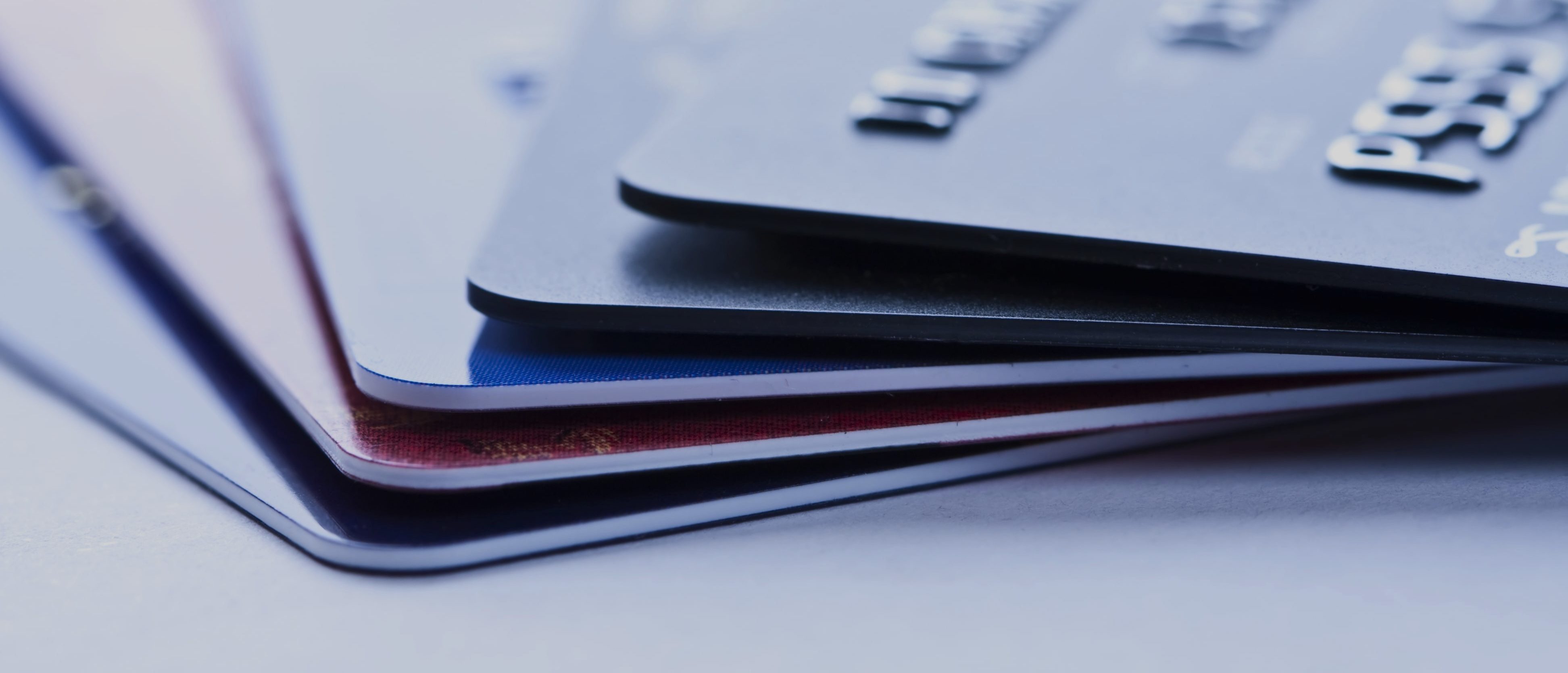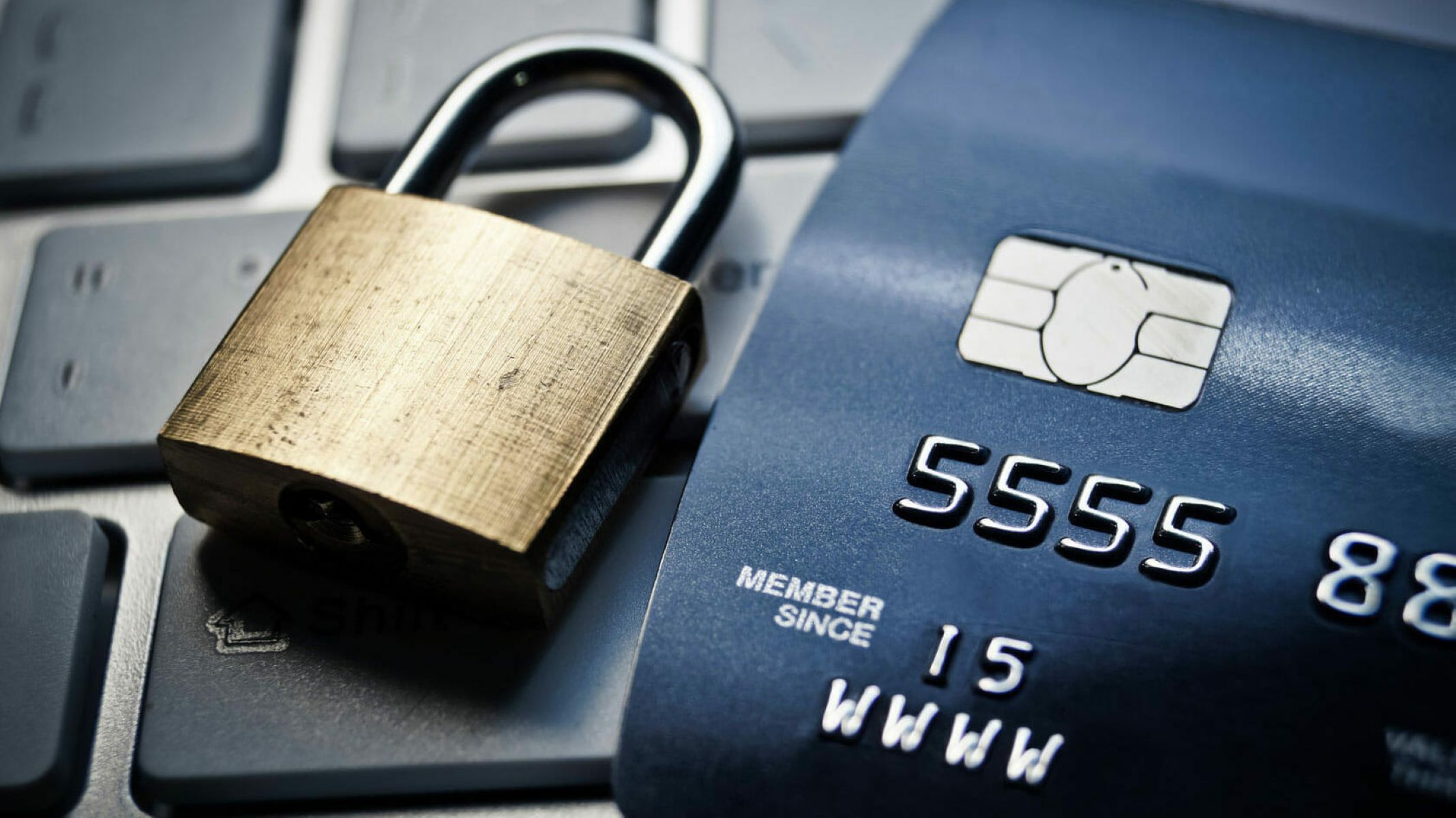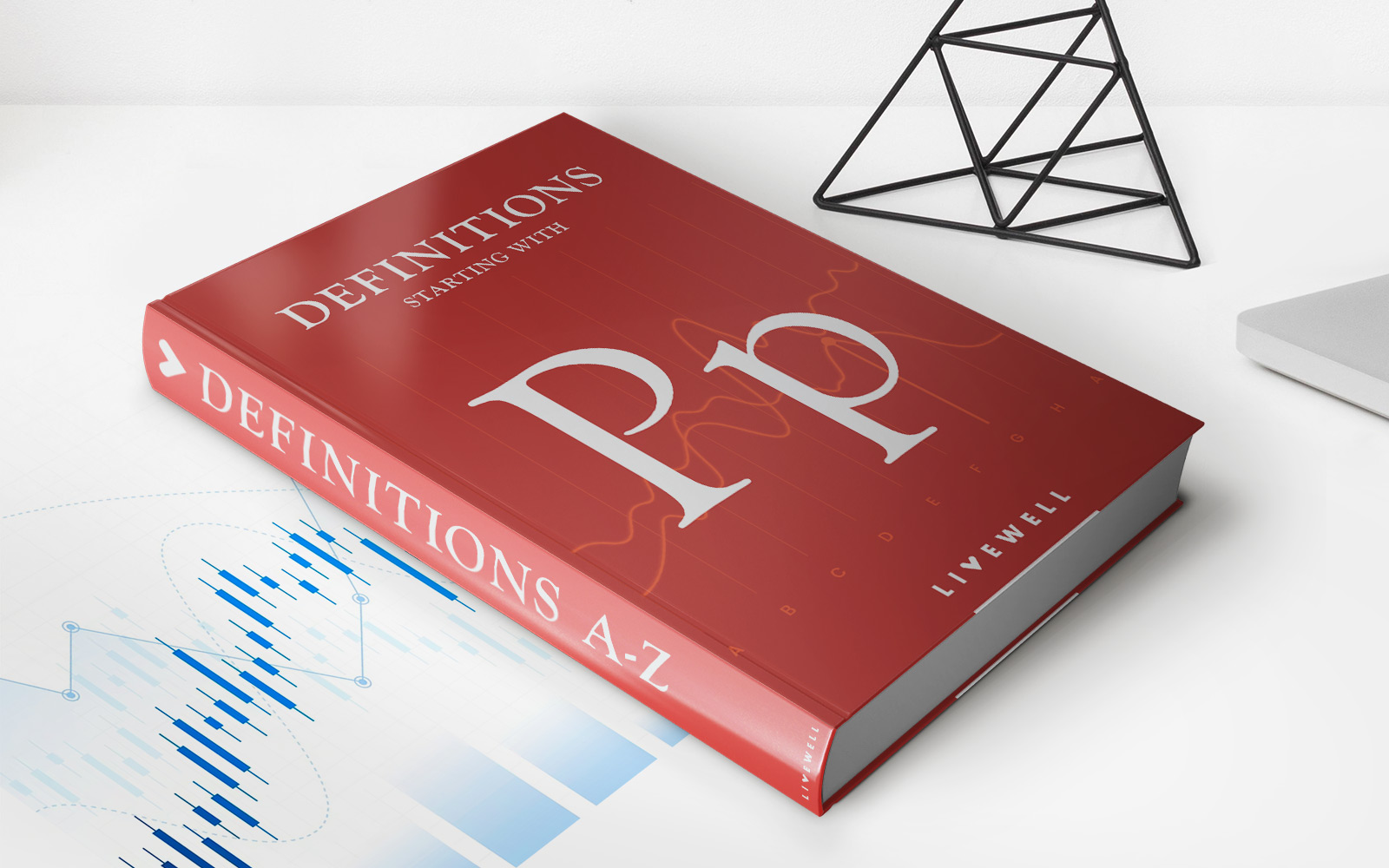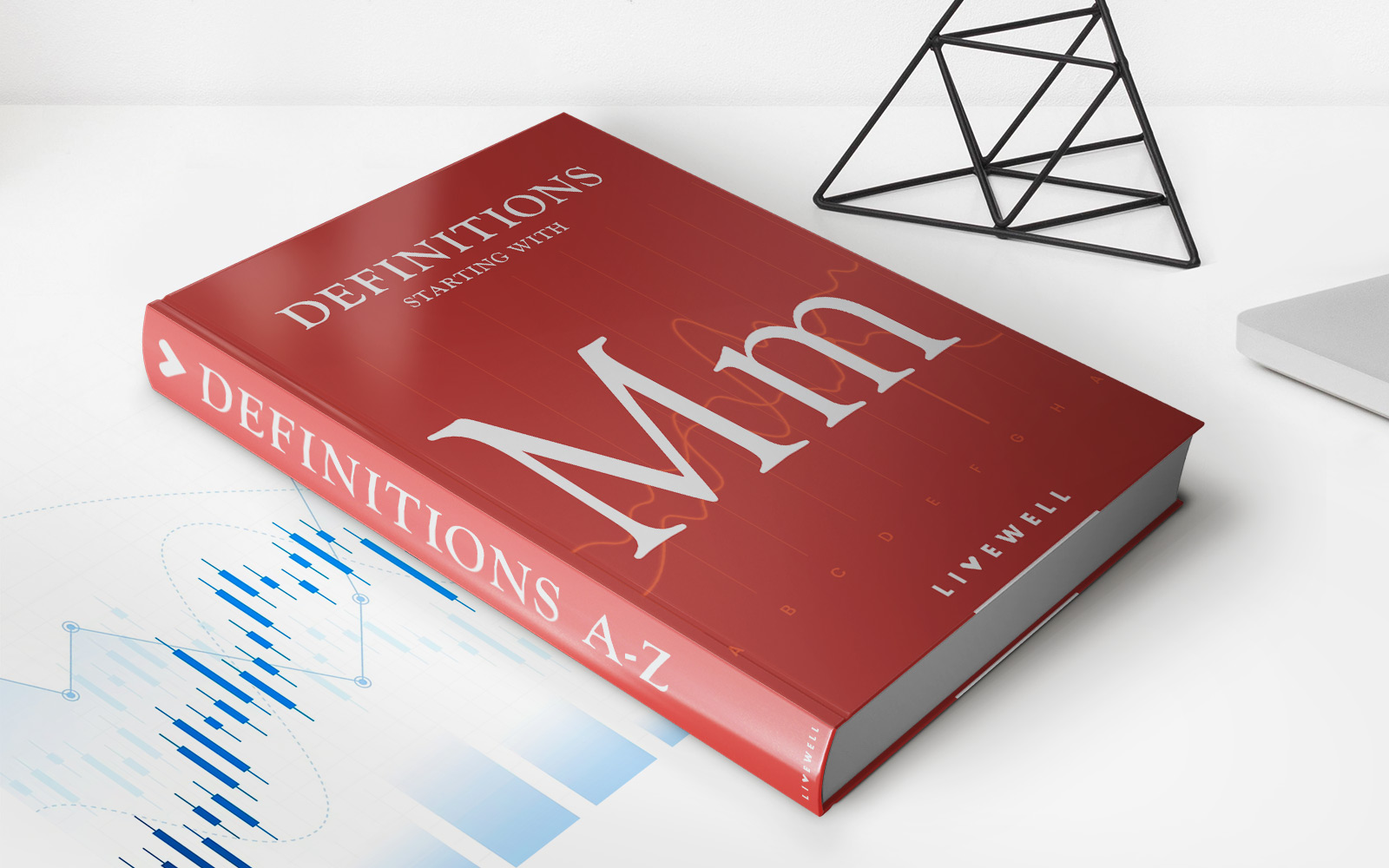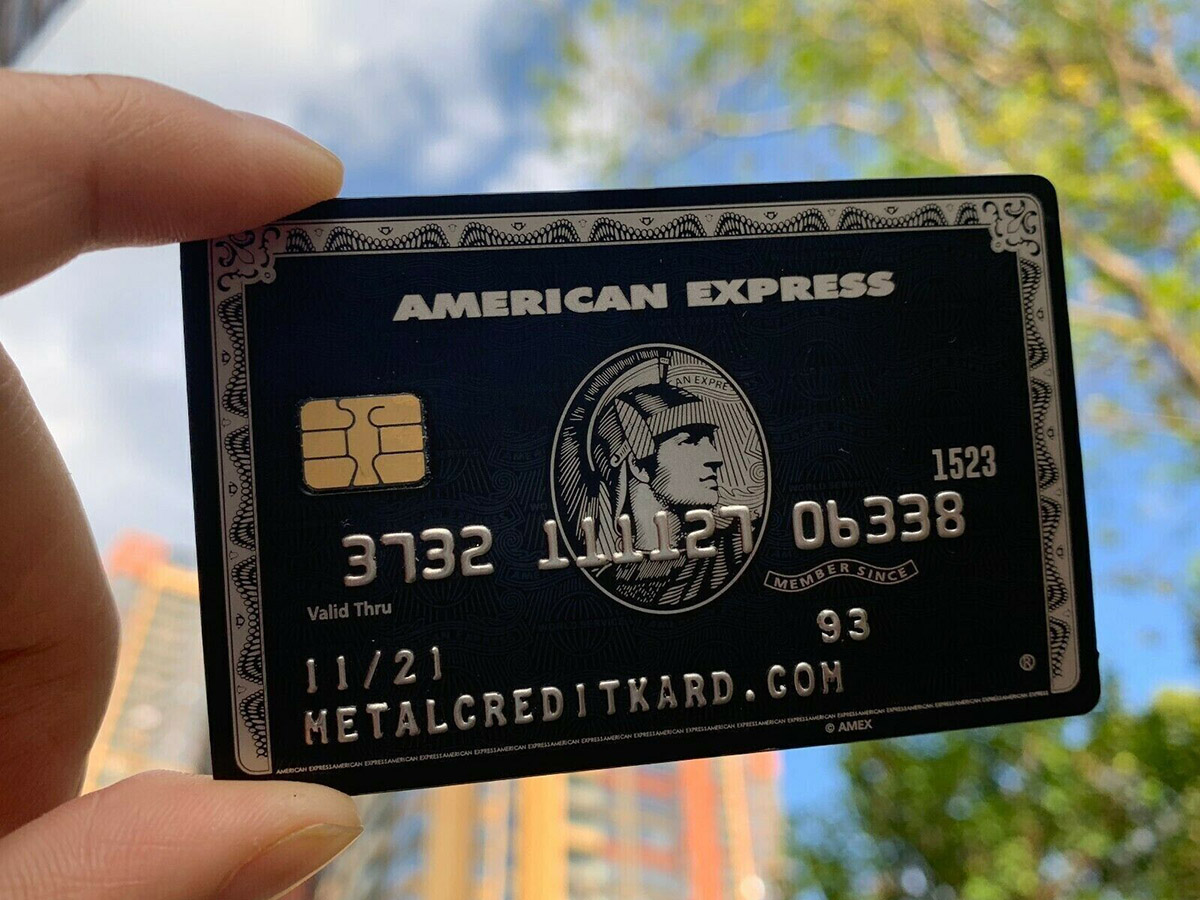

Finance
How To Get A Credit Card With No Limit
Published: November 4, 2023
Looking to finance your expenses? Discover how to get a credit card with no limit at your fingertips. Unlock endless possibilities with our expert tips and advice.
(Many of the links in this article redirect to a specific reviewed product. Your purchase of these products through affiliate links helps to generate commission for LiveWell, at no extra cost. Learn more)
Table of Contents
- Introduction
- The Pros and Cons of Credit Cards with No Limit
- Factors to Consider Before Applying for a Credit Card with No Limit
- Steps to Get a Credit Card with No Limit
- Benefits of Credit Cards with No Limit
- How to Use a Credit Card with No Limit Responsibly
- Common Misconceptions about Credit Cards with No Limit
- Alternatives to Credit Cards with No Limit
- Conclusion
Introduction
Welcome to the world of credit cards with no limits! Gone are the days of worrying about hitting your credit card limit and having to deal with declined transactions. With credit cards that offer no limit, you can enjoy the freedom of unlimited spending power, as long as you manage it responsibly.
Credit cards with no limits have gained popularity in recent years, offering cardholders flexibility and convenience like never before. This financial innovation has opened up new possibilities for individuals who have a good credit history and want to enjoy a higher spending capacity.
But before we delve into the ins and outs of getting a credit card with no limit, it’s important to understand what it entails and how it differs from traditional credit cards. Unlike regular credit cards that have a predetermined credit limit based on your income and creditworthiness, credit cards with no limits rely on an algorithm that determines your spending power based on various factors such as your income, credit score, and spending patterns.
In this comprehensive article, we’ll explore the pros and cons of credit cards with no limits, factors to consider before applying for one, steps to get a credit card with no limit, the benefits of having such a card, how to use it responsibly, common misconceptions, and alternative options available.
So, if you’re ready to learn more about how to get a credit card with no limit and make the most of this financial tool, let’s dive right in!
The Pros and Cons of Credit Cards with No Limit
Credit cards with no limits come with their fair share of advantages and disadvantages. Understanding these pros and cons will help you decide if getting a credit card with no limit is the right choice for you. Let’s take a closer look:
Pros:
- Flexibility: The biggest advantage of a credit card with no limit is the flexibility it offers. You can make large purchases without worrying about hitting your credit limit. This can be especially beneficial for individuals who have significant expenses or unpredictable spending needs.
- Emergency Purchases: Having a credit card with no limit can be a lifesaver in case of emergencies. Whether it’s unexpected medical expenses or car repairs, you have the peace of mind knowing that you can cover these costs without any restrictions.
- Rewards and Perks: Credit cards with no limits are often linked to generous rewards programs and exclusive perks. Cardholders may enjoy benefits such as cashback, travel rewards, concierge services, airport lounge access, and more.
- Boost Credit Score: Responsible use of a credit card with no limit can have a positive impact on your credit score. Timely payments and low credit utilization can improve your creditworthiness over time.
Cons:
- Temptation to Overspend: The lack of a set credit limit may tempt some individuals to overspend and indulge in unnecessary purchases. It’s crucial to exercise self-control and ensure that you can repay the borrowed amount in a timely manner.
- Higher Annual Fees: Credit cards with no limits often come with higher annual fees compared to traditional credit cards. This additional cost should be taken into consideration when assessing the overall value and affordability of the card.
- Stringent Approval Criteria: Since credit cards with no limits offer higher spending capabilities, the approval criteria may be more stringent. Lenders may require a higher credit score, a stable income, and a solid credit history to qualify for such cards.
- Risk of Overwhelming Debt: While credit cards with no limits provide flexibility, they also pose a risk of accumulating overwhelming debt if not managed responsibly. It’s crucial to create a budget, track your expenses, and make timely payments to avoid falling into a debt trap.
By carefully weighing the pros and cons, you can determine if a credit card with no limit aligns with your financial goals and lifestyle. Remember, responsible financial management is key to maximizing the benefits while mitigating the potential drawbacks of owning a credit card with no limit.
Factors to Consider Before Applying for a Credit Card with No Limit
While the allure of a credit card with no limit may be enticing, it’s essential to carefully evaluate certain factors before diving into the world of unlimited spending. Here are some key considerations to keep in mind:
Credit Score and History:
Credit card issuers typically reserve credit cards with no limits for individuals with excellent credit scores. Before applying, ensure that your credit score is in good standing and that you have a history of responsible credit management. Lenders may also consider factors like credit utilization, payment history, and length of credit history.
Income and Debt-to-Income Ratio:
A higher income and a low debt-to-income ratio can increase your chances of qualifying for a credit card with no limit. Credit card issuers want to ensure that you have the financial capacity to handle the potential high spending that comes with unlimited credit. Be prepared to provide evidence of your income and demonstrate your ability to manage your debts responsibly.
Annual Fees:
Credit cards with no limits often come with higher annual fees compared to traditional credit cards. Consider whether the benefits and rewards offered by the card justify the annual fee and fit within your budget. Calculate the potential value you can derive from the card’s features to determine if it outweighs the cost.
Other Cardholder Benefits:
Look beyond the no-limit feature and explore the additional benefits offered by the credit card. Consider perks such as cashback rewards, travel insurance, extended warranties, and concierge services. Assess whether these benefits align with your lifestyle and needs to make the most of your credit card experience.
Interest Rates and Fees:
Review the interest rates, late payment fees, foreign transaction fees, and other charges associated with the credit card. While the no-limit feature may be appealing, it’s crucial to understand the costs involved in carrying a balance or making certain transactions. Choose a credit card with favorable terms and conditions to avoid unnecessary financial strain.
Financial Discipline:
A credit card with no limit requires responsible financial discipline. Consider your own spending habits and self-control before deciding to get a card with unlimited credit. If you tend to overspend or struggle with managing credit, it may be more suitable to opt for a card with a traditional credit limit instead.
By carefully assessing these factors and determining if a credit card with no limit aligns with your financial situation and goals, you can make an informed decision that will set you up for a successful and responsible credit card experience. Remember, responsible credit card usage is essential in building a strong financial foundation.
Steps to Get a Credit Card with No Limit
If you’ve decided that a credit card with no limit is the right fit for you, here are the steps you can follow to apply and increase your chances of approval:
1. Check your Credit Score:
Before applying for a credit card with no limit, it’s important to check your credit score. Lenders typically require an excellent credit score (usually above 750) for approval. If your score is lower, take steps to improve it before applying.
2. Research Credit Cards:
Research credit cards that offer no limits and compare their features, rewards, fees, and terms. Look for cards that align with your needs and financial goals. Consider factors such as annual fees, interest rates, rewards programs, and additional benefits to find the best fit.
3. Gather Financial Documents:
Compile the necessary financial documents that demonstrate your income, employment stability, and overall financial health. These documents may include recent pay stubs, tax returns, and bank statements.
4. Prepare a Strong Application:
When applying for a credit card with no limit, it’s crucial to submit a strong application. Fill out the forms accurately and provide all required information. Highlight your financial stability, low debt-to-income ratio, and responsible credit management to increase your chances of approval.
5. Choose the Right Credit Card Provider:
Select a reputable credit card provider that offers no-limit credit cards. Look for institutions with a track record of reliable customer service, robust security measures, and transparency in their terms and conditions.
6. Submit Your Application:
Once you have gathered all the necessary information and selected the credit card provider, submit your application through their preferred channel. This may be online, through a mobile app, or by visiting a local branch. Double-check all the details before submitting to ensure accuracy.
7. Await Approval:
After submitting your application, patiently await a response from the credit card provider. The approval process may take some time, as they carefully evaluate your application and conduct a thorough credit check.
8. Responsible Credit Card Usage:
If your application is approved and you receive a credit card with no limit, remember to use it responsibly. Keep track of your expenses, make timely payments, and avoid carrying a high balance. Responsible usage will help you maximize the benefits of the no-limit feature while maintaining a healthy credit score.
By following these steps and being diligent throughout the application process, you can increase your chances of obtaining a credit card with no limit. Remember that eligibility criteria may vary among credit card providers, so it’s important to research and choose the one that aligns with your financial needs and goals.
Benefits of Credit Cards with No Limit
Credit cards with no limits offer a range of benefits that can enhance your financial flexibility and provide added convenience. Let’s explore some of the key advantages of having a credit card with no limit:
1. Unlimited Spending Power:
The most obvious benefit of a credit card with no limit is the freedom to make purchases without worrying about hitting a credit cap. Whether it’s for a major purchase or everyday expenses, you can enjoy the convenience of unlimited spending power.
2. Flexibility and Convenience:
With no spending limit to worry about, you have the flexibility to manage unexpected expenses or take advantage of time-sensitive opportunities. It eliminates the need to constantly track your credit utilization and allows for quick and convenient transactions.
3. Higher Credit Score Potential:
Using a credit card with no limit responsibly can have a positive impact on your credit score. By maintaining a low credit utilization ratio and making timely payments, you can demonstrate financial responsibility and improve your creditworthiness over time.
4. Enhanced Rewards and Benefits:
Credit cards with no limits often come with generous rewards programs and additional benefits. These may include cashback rewards, travel perks, concierge services, airline lounge access, extended warranties, and purchase protection. By maximizing these benefits, you can maximize the value you derive from your credit card.
5. Emergency Financial Safety Net:
In times of unexpected emergencies or financial crises, having a credit card with no limit can serve as a safety net. It provides you with the peace of mind knowing that you have a reliable source of funds to cover essential expenses or unforeseen circumstances.
6. High-Value Purchases:
If you regularly make significant purchases, whether for business or personal reasons, having a credit card with no limit can be particularly advantageous. It allows you to complete transactions without the need to split payments or seek an alternative form of financing.
7. Prestige and Status:
Owning a credit card with no limit is often associated with prestige and status. It can open doors to exclusive membership programs, premium customer service, and invitations to special events. Having such a credit card can be a symbol of financial success and achievement.
Remember, while credit cards with no limits offer numerous benefits, it’s crucial to use them responsibly and within your means. Regular monitoring of your expenses, adhering to a budget, and making timely payments are essential to avoid falling into a debt trap. By utilizing the benefits of a credit card with no limit wisely, you can enjoy the perks it offers while maintaining a healthy financial profile.
How to Use a Credit Card with No Limit Responsibly
While having a credit card with no limit provides you with unlimited spending power, it’s important to use it responsibly to avoid financial pitfalls. Here are some guidelines to help you use a credit card with no limit responsibly:
1. Create a Budget:
Even though you have no spending limit, it’s still crucial to create a budget and track your expenses. Determine how much you can realistically afford to spend each month and allocate funds accordingly. This will help you avoid overspending and ensure that you can pay off your balance in full each month.
2. Track Your Expenses:
Maintain a record of your credit card transactions and regularly review your statements. Tracking your expenses will help you stay aware of your spending habits and identify any potential issues or discrepancies.
3. Stay Within Your Means:
While a credit card with no limit may tempt you to make extravagant purchases, it’s important to resist the urge to spend beyond your means. Consider your income, financial goals, and other obligations before making any large purchases. Only spend what you can comfortably repay.
4. Pay Your Balance in Full:
To avoid unnecessary interest charges, aim to pay off your credit card balance in full each month. This will help you maintain a good credit score and avoid accumulating debt over time. Paying your balance in full also ensures that you are using your credit card as a convenience tool rather than relying on it for financing.
5. Monitor Your Credit Utilization:
Even though a credit card with no limit doesn’t have a pre-set credit limit, it’s still important to keep an eye on your credit utilization ratio. Aim to keep your utilization below 30% to maintain a healthy credit score. High utilization can raise red flags to lenders and potentially harm your creditworthiness.
6. Stay Aware of Due Dates:
Ensure that you pay your credit card bill on time each month to avoid late payment fees and negative impacts on your credit score. Set up reminders or automatic payments to ensure you never miss a due date.
7. Regularly Review Your Credit Report:
Monitor your credit report at least once a year to check for any errors or discrepancies. Promptly address any inaccuracies to avoid potential negative effects on your credit score.
8. Use Additional Cardholder Benefits:
Take advantage of the extra benefits that come with your credit card, such as rewards programs, cashback offers, and travel perks. Be sure to understand the terms and conditions associated with these benefits and utilize them to maximize the value you get from your card.
By following these responsible usage practices, you can enjoy the flexibility and advantages that come with a credit card with no limit while maintaining a healthy financial profile and avoiding unnecessary debt.
Common Misconceptions about Credit Cards with No Limit
Credit cards with no limit often spark excitement and intrigue among individuals seeking greater financial flexibility. However, there are several misconceptions surrounding these cards that need to be addressed. Let’s debunk some of the most common misconceptions:
1. No Limit Means Unlimited Spending:
Contrary to popular belief, having a credit card with no limit does not equate to unlimited spending. While there is no predefined credit limit, cardholders are still subject to the issuer’s internal risk assessment and can be denied transactions that exceed their creditworthiness or spending patterns.
2. No Need for Financial Discipline:
Some may mistakenly assume that a credit card with no limit eliminates the need for financial discipline. In reality, responsible spending habits and diligent repayment remain essential. Indiscriminate spending without considering your ability to repay can lead to overwhelming debt and financial stress.
3. Easy Approval for Everyone:
Obtaining a credit card with no limit is often seen as a quick and guaranteed process. However, eligibility for these cards requires a strong credit history, high credit score, and stable income. Lenders carefully assess applications to ensure borrowers have the financial capacity to handle the higher spending associated with these cards.
4. Always Higher Credit Score:
While responsible use of a credit card with no limit can positively impact your credit score, it is not a guarantee of an improved or higher credit score. Factors like payment history, credit utilization, and overall credit management still play crucial roles in determining your creditworthiness.
5. No Fees Associated:
It’s a common misconception that credit cards with no limits do not have any fees associated with them. While the absence of a preset credit limit may eliminate over-limit fees, these cards can come with higher annual fees, foreign transaction fees, or other charges. Always review the terms and conditions of the card to understand the associated costs.
6. Unlimited Access to Credit:
Although a credit card with no limit provides higher spending power, it does not grant unlimited access to credit. Lenders regularly review cardholder accounts and may reduce a credit limit or even cancel the card based on changes in the cardholder’s financial circumstances or creditworthiness.
7. Reserved for the Wealthy:
It’s a common misconception that credit cards with no limits are exclusively reserved for the wealthy elite. While higher income and a strong credit history are typically required, these cards can be accessible to individuals with diverse financial backgrounds, provided they meet the eligibility criteria set by the issuer.
Understanding and dispelling these common misconceptions about credit cards with no limits is crucial for making informed financial decisions. By managing your expectations and responsibly utilizing these cards, you can maximize their benefits while avoiding any potential pitfalls.
Alternatives to Credit Cards with No Limit
While credit cards with no limits offer flexibility and convenience, they may not be the right fit for everyone. If you’re looking for alternatives to credit cards with no limits, consider the following options:
1. Traditional Credit Cards:
Traditional credit cards come with preset credit limits based on your income, credit history, and other factors. They offer a controlled spending capacity and can be easier to manage for individuals who prefer to have a specific credit limit in place.
2. Secured Credit Cards:
If you have a limited credit history or a low credit score, secured credit cards can be a viable alternative. These cards require you to provide a security deposit that serves as collateral. The credit limit is typically determined by the amount of the deposit, allowing you to build or rebuild your credit over time.
3. Debit Cards:
Debit cards are linked directly to your bank account and allow you to spend only the funds available in your account. They provide a convenient and straightforward method of payment without the risk of accumulating debt. However, it’s important to note that debit cards may not offer the same purchase protection and rewards as credit cards.
4. Prepaid Cards:
Prepaid cards are similar to debit cards but are not linked to a bank account. Instead, you can load a specific amount onto the card, and you can only spend up to that loaded amount. Prepaid cards are a good option if you want to control your spending and avoid the risk of overspending.
5. Line of Credit:
A line of credit is a borrowing option where a lender grants you a specific credit limit that you can access as needed. You only pay interest on the amount you borrow, and you have flexibility in terms of when and how much you use. Lines of credit can be secured or unsecured, and the interest rates may vary.
6. Personal Loans:
If you have a specific large expense in mind, like a home renovation or a major purchase, a personal loan can be a suitable option. Personal loans provide a lump sum amount that is paid back over a fixed period of time, typically with a predetermined interest rate and fixed monthly payments.
7. Budgeting and Cash Management:
Finally, one of the most effective alternatives to credit cards with no limits is to establish a comprehensive budget and practice disciplined cash management. By tracking your expenses, prioritizing savings, and living within your means, you can achieve financial stability and avoid the potential pitfalls of using credit excessively.
When considering alternatives, it’s important to assess your financial situation, goals, and spending habits. Choose the option that aligns with your needs and preferences, while also considering the associated fees, interest rates, repayment terms, and benefits.
Remember, responsible financial management and wise decision-making are the key factors in achieving long-term financial success, regardless of the type of financial tools you choose to use.
Conclusion
Credit cards with no limits offer an enticing opportunity for individuals to enjoy unlimited spending power, flexibility, and convenience. However, it’s important to approach these cards with caution and responsibility. While the benefits of a credit card with no limit can be appealing, it’s crucial to consider factors such as creditworthiness, financial discipline, and overall suitability for your financial goals.
In this article, we explored the pros and cons of credit cards with no limits, factors to consider before applying, steps to obtain one, and how to use it responsibly. We also addressed common misconceptions and provided alternative options for individuals who may not find these cards to be the best fit.
Remember, regardless of the type of credit card you choose, responsible financial management is essential. Develop a budget, track your expenses, make timely payments, and utilize the benefits and rewards offered by your card wisely. By doing so, you can leverage the advantages of credit cards while mitigating the risks of accumulating unnecessary debt.
Whether you decide to pursue a credit card with no limit or opt for an alternative option, always prioritize your financial well-being and make informed decisions that align with your personal circumstances and goals.
As you embark on your credit card journey, remember that responsible credit usage is the key to maintaining a healthy financial profile and achieving long-term financial success.






